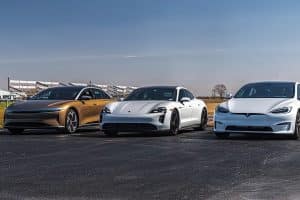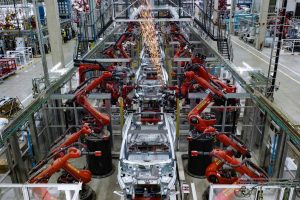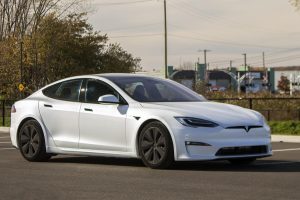Ideanomics has announced that they have invested in electric tractor company Solectrac.
Ideanomics is an investment firm looking to further the growth of electric vehicles, and the company they hope will do just that is Solectrac, an electric tractor manufacturer. Solectrac could be one of the first companies to bring electrified transport and production technology to the agriculture industry.
Solectrac is a California-based startup looking to make the agriculture industry a little bit cleaner. While traditionally, farming has relied on diesel-fueled vehicles, Solectrac hopes to show that electric tractors can work just as well, if not better. Not all tractors need to travel vast amounts of distance, but they do need to be able to pull, haul, and lift in all sorts of conditions; wet, muddy, dusty, cold, hot, you name it. And with an electric drivetrain, it can do all of those things quieter, cheaper, and cleaner than diesel alternatives.
Solectrac has already supplied their small electric tractor to the University of California Agriculture and Natural Resources, where the tractors are being tested for use in the University’s plant nursery. The Solectrac e25 electric tractor advertises up to 6 hours of run time via a 22kWh battery. It is designed explicitly for “hobby farms, golf courses, sports fields, equestrian centers and municipalities,” according to the company’s website.
While the small tractor is far from being ready for commercial agriculture use, this added investment from Ideanomics hopes to allow the company to expand in the near future and meet more considerable commercial demand soon. Solectrac’s press release talks explicitly about introducing a new model next year, expanding its dealer network, and expanding its R&D for new models in the distant future.
Agriculture is another industry that will likely change in the coming years to use more electrified equipment, allowing farmers to reduce costs, limit pollution, and maintain their crucial output, allowing everyone to eat as we do today. However, only through the tractor’s use can farmers test the viability of an electric solution.





